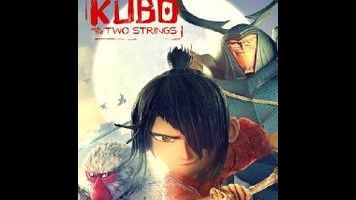Laika releases another, less ghoulish triumph with Kubo And The Two Strings

Deceased parents are (ironically) such a staple of family-friendly animation that it takes Kubo And The Two Strings some time to orient the audience to its variation on the orphaned child hero. Kubo (voiced by Art Parkinson) isn’t alone in the world, but sometimes feels like it; he cares for his mother in their sparse cliffside home in ancient Japan. Kubo’s mother has moments of lucidity where she talks about his dead father and their history together, before retreating into a semi-catatonic state, relying on her son to cook for her and put her to bed. During the day, the one-eyed Kubo travels to a nearby village, where he puts on magically enhanced origami shows—an ongoing and oft-repeated story of heroism and derring-do without a clear ending.
During her more talkative moments, Kubo’s mother warns him not to stay in the village past sunset, and of course he inevitably does this, raising the twin specters of his aunts (Rooney Mara), who want to assist Kubo’s grandfather in retrieving the boy’s remaining eye. To defeat them, Kubo goes on a bizarre quest, led by an origami representation of his father and assisted by a stern monkey (Charlize Theron) who has come to life from a charm Kubo has always carried with him. Monkey and Kubo also encounter a skittering beetle-man (Matthew McConaughey, getting most of the laughs) whose enthusiasm is sometimes undone by his hazy memories.
Kubo And The Two Strings is not based on a specific Japanese folktale, and at certain points it feels like the sharp minds and deft hands at Laika, the stop-motion studio whose unblemished track record also includes Coraline, ParaNorman, and The Boxtrolls, may be overcompensating by tinkering with as much mythology as possible, to create the impression of legitimacy. The writers overload the story’s arms with enchanted objects that Kubo must find, and/or never lose, and/or learn how to control using his vaguely defined personal magic. This is Laika’s least droll, least ghoulish feature so far; the plotting is even more dreamlike than Coraline.
As it happens, no American animation studio is better-suited to dreamlike plotting than Laika, and the animation of Kubo is truly dazzling, mixing sophistication and handmade charm with inspired flow. The movie glides from one gorgeous sequence to the next, alternating contemplation with, say, the appearance of a giant fire-eyed skeleton. As ever, one of Laika’s best hallmarks is its endless invention in the field of monster creation: giant eyeballs, witch-like figures, that massive skeleton. If first-time director and company CEO Travis Knight doesn’t seem quite as interested in riffing on horror-movie imagery as his predecessors (like ParaNorman writer-director Chris Butler, on hand with a co-writing credit), he still plays to his animators’ great and numerous strengths.
The movie isn’t all set pieces. It’s not even particularly action-packed. But even its noisiest, 3-D-heaviest moments are gorgeous, like the eye-popping scene that sets a moonlit sword fight on a ship made of leaves, tossing over rough seas. In the downtime, Laika continues its exploration of children catching glimpses of strange and sometimes more adult worlds. All of Laika’s movies focus on kid heroes, and they’re never poster children for pure exceptionalism, even when, like Kubo, they have certain magical powers. In locating the emotional center of Kubo, there is a lot—a lot—of talk about stories and endings. But if Laika hits its themes a little on the nose this time, it has nonetheless crafted a movie with real resonance. Plenty of animation uses dead parents as an easy trope; Kubo actually attempts to process death as a part of life.